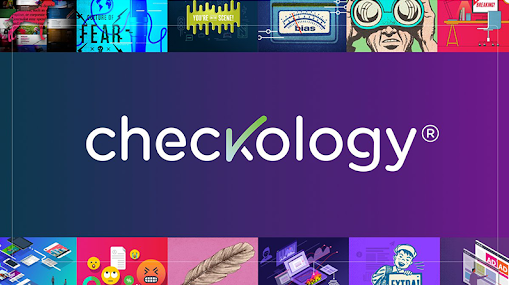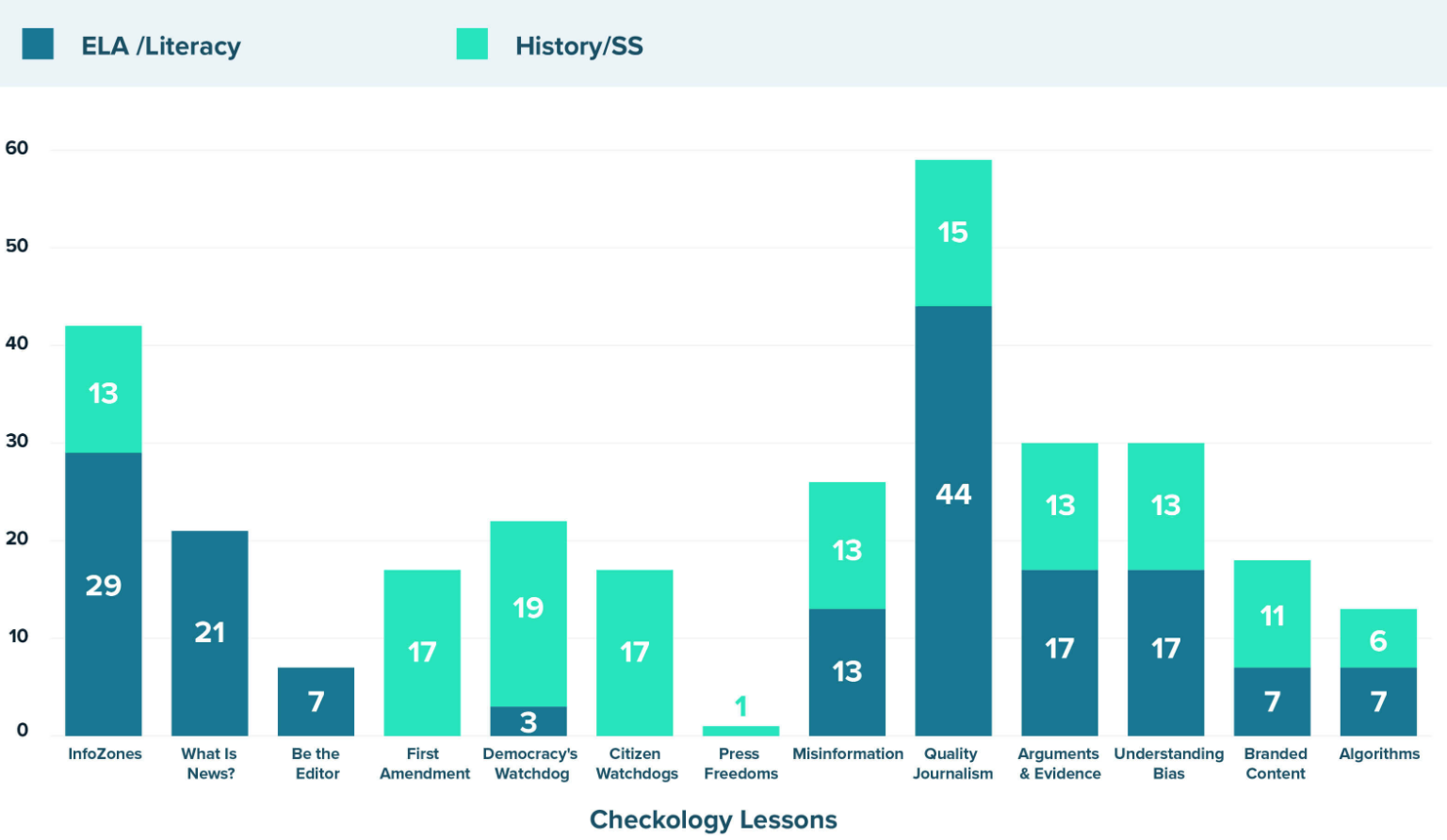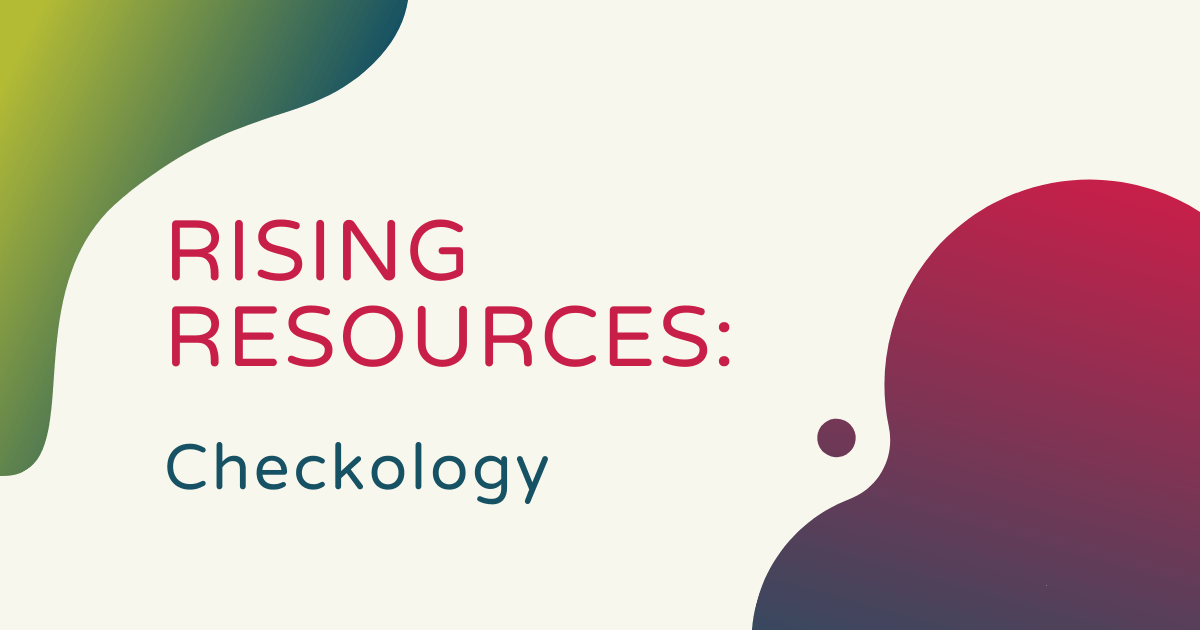Over the last few years, the term ‘fake news’ has perforated almost everybody’s lives and, in the last few weeks, everybody has certainly been following the news very closely. As schools remain closed, teachers and students—we’re sure—are monitoring the latest updates on the coronavirus situation. With that comes a need for strong digital literacy skills and the need to identify accurate information from reputable sources. Along those lines, Checkology helps students develop media literacy skills with relevant lessons that help them evaluate and interpret information.
Checkology is ideal for middle and high school students to learn about navigating the complex news literacy landscape. It was developed by an educational organization known as the News Literacy Project and essentially serves as a virtual classroom environment, allowing students to learn important literacies interactively. When using the Checkology platform, students hear directly from leading journalists, digital media experts, and First Amendment scholars, who provide them with real-world examples that test their understanding and help them on their way to mastering media literacy.
Checkology allows students to learn both independently and collaboratively with an in-depth news literacy curriculum that includes 13 interactive lessons and exercises for students to complete. Lessons are on four topics: filtering news information, exercising civic freedoms, navigating information, and learning to know what to believe. Of course, each of these areas are extremely relevant today and working through the Checkology curriculum gives students useful insights.
Some of the lessons include those that media teachers have requested themselves and there are a lot of interactive elements, including game-like exercises that help students practice their skills. As for teachers, they can customize lessons in and focus on lessons that align with classroom objectives. Teachers can encourage students to work independently or collaboratively (or alternate) and students can move through at their own pace.

Teachers who have used Checkology with their students have overwhelmingly indicated that it’s helped boost their news literacy skills. On top of that, 69 percent of students were able to identify quality journalism after completing the Checkology lessons and student understanding of the First Amendment increases dramatically as well. Checkology measures learning outcomes by offering a pre-platform assessment for each student. Then, a post-lesson assessment helps ensure they’re progressing—something that provides specific insight into what students know and learn.
Some of the lessons in the free Checkology plan cover topics like practicing quality journalism, understanding bias, and misinformation. Checkology Premium is also free at the moment in an effort to aid learning disruptions. It includes a deeper dive into journalism topics, like the First Amendment, free press worldwide, branded content, and more.
After learning with Checkology, students will be able to better categorize the information they consume on a daily basis, make their own judgements and critiques on the news they see, explore how the press as well as ordinary citizens can act as watchdogs, and learn how to identify fallacies among other things. Most importantly, the Checkology lessons align with various ELA, literacy, history, and social studies standards. And, they even offer a detailed breakdown of how to meet specific requirements on their site.

There are two versions of Checkology—basic (free) and the premium version, which costs between $3 and $5 per student. With a basic account, users can get free access to Checkology’s foundational lessons. Teachers would sign into their account to offer instruction and access a guide with standards alignment information.
With a premium account, users get access to a lot more, including customer support, individual student accounts for one-to-one instruction, lesson plan customization, a class discussion area, a student leaderboard, and more. Users can either register as a student or a teacher, but teachers need to set up their account first. When starting, they’ll receive a code they can then share with students, allowing them to set up their own.
Hearing from real journalists adds an element of authenticity and provides a valuable glimpse into the importance of news literacy. If you’re looking for some very relevant learning material to share with students remotely, we’d definitely recommend checking out Checkology. Once you have, don’t forget to check out the rest of our blog and the STEM tools on our store. Follow us on Twitter and Instagram, too!



